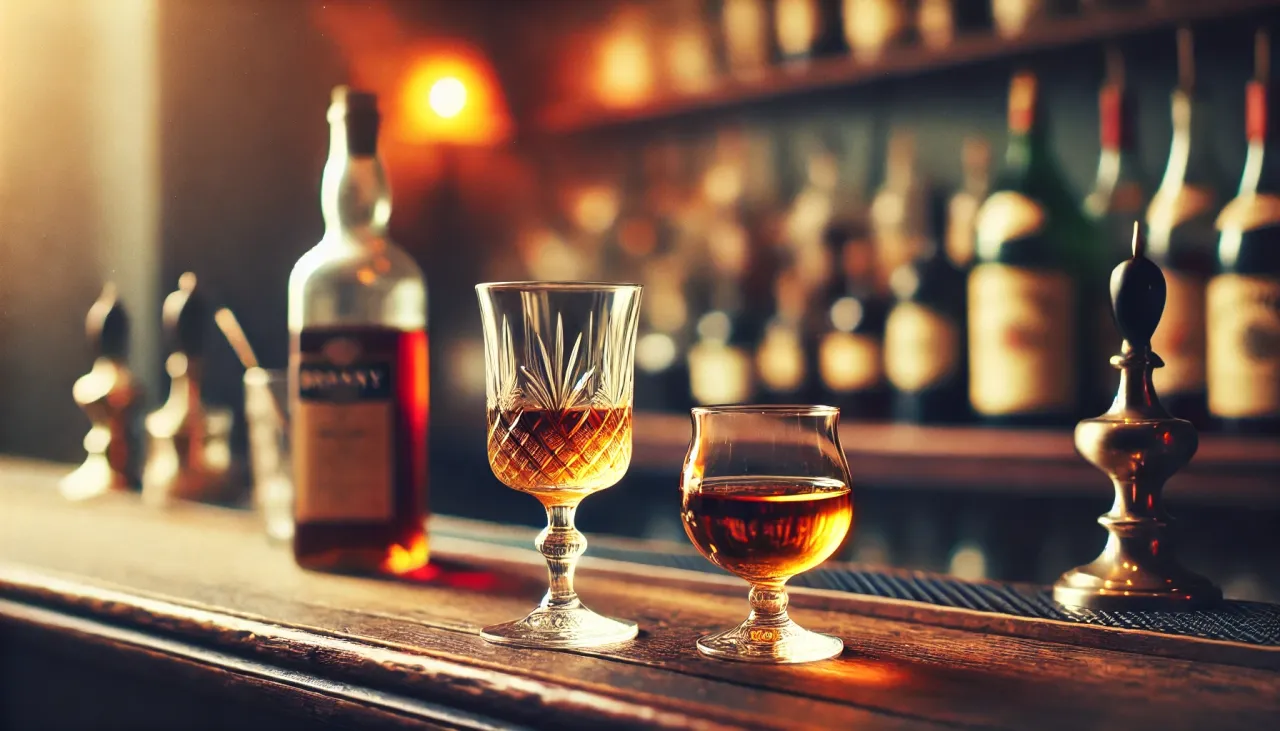Unveiling the Distinctive World: Cognac vs. Brandy

By Dave C & Boozeopedia AI Workflow
See how we write our articles
Did you know that Cognac was once called the liquor of kings and was Napoleon’s drink of choice? Yet, many still confuse Cognac and Brandy. While all Cognac is Brandy, not all Brandy is Cognac. Understanding their differences can help you choose the perfect spirit for sipping, mixing, or pairing with food. Let’s explore their origins, production, taste profiles, and the best ways to enjoy them.
Origin and Geographical Differences
- Cognac: Named after the town of Cognac in France, this variety of Brandy must be produced in the Cognac region under strict guidelines.
- Brandy: A more generic term for distilled fruit spirits, Brandy can be made anywhere in the world, with variations like Armagnac (France), Pisco (Peru), and American Brandy.
Production Methods
- Cognac: Made exclusively from specific grape varieties (mainly Ugni Blanc), it undergoes double distillation in copper pot stills and is aged in French oak barrels for at least two years.
- Brandy: Distilled from fermented fruit juice (grapes, apples, pears), Brandy production methods vary widely. Some are aged in oak barrels, while others remain unaged, impacting flavor.
Taste Profile and Varieties
Here’s how Cognac and Brandy compare in taste:
| Feature | Cognac | Brandy |
|---|---|---|
| Aroma | Floral, fruity, hints of oak | Varies based on fruit source; often rich and bold |
| Taste | Smooth, balanced, notes of dried fruits and spice | Can be sweet, caramel-like, or robust |
| Finish | Long, complex, often warming | Shorter, varies based on aging |
Notable Cognac brands: Hennessy, Rémy Martin, Courvoisier
Popular Brandy brands: E&J, Germain-Robin, Torres
How to Drink Cognac vs. Brandy
Glassware & Serving Temperature
- Cognac: Best enjoyed in a snifter or tulip glass to concentrate aromas. Warm it slightly in your hand to release flavors.
- Brandy: Typically served in a snifter but can also be enjoyed in a tumbler or cocktail glass depending on preparation.
Cognac & Brandy Drinks
- Cognac Cocktails: Sidecar, Champs-Élysées Cocktail, Café Brulot
- Brandy Cocktails: Brandy Cobbler, Brandy Cocktail, Brandy Highball, Brandy Manhattan, Brandy Slush
Culinary Pairings
Pairing Cognac and Brandy with food enhances their flavors. Here’s a quick guide:
| Spirit | Food Pairing |
|---|---|
| Cognac (VS) | Soft cheeses (Brie, Camembert), seafood (scallops) |
| Cognac (VSOP) | Dark chocolate, roast duck, blue cheese |
| Cognac (XO) | Cigar, truffle dishes, aged cheddar |
| Brandy | Apple pie, grilled meats, nuts, caramel-based desserts |
Buying Guide for Beginners
If you're new to Cognac and Brandy, here's what to look for:
- Cognac Labels:
- VS (Very Special) – Aged at least 2 years, light and fruity.
- VSOP (Very Superior Old Pale) – Aged at least 4 years, richer and smoother.
- XO (Extra Old) – Aged at least 10 years, full-bodied and complex.
- Brandy Types:
- Armagnac – Richer and more rustic than Cognac.
- American Brandy – Often fruitier and less aged.
- Pisco – Peruvian Brandy with a bright, floral character.
FAQs
Is Cognac always better than Brandy?
Not necessarily. Cognac follows strict production standards, making it refined and consistent. However, high-quality Brandies from Spain, the U.S., and other regions offer excellent alternatives with unique characteristics.
Can you substitute Cognac for Brandy in cocktails?
Yes! Cognac can replace Brandy in most cocktails, though it tends to have a smoother, more complex profile. Adjust the sweetness as needed.
What is the best way to enjoy Cognac and Brandy?
Both are great neat, on the rocks, or in cocktails. Cognac is often sipped slowly, while Brandy offers more flexibility in mixing.
Final Thoughts
Cognac and Brandy each have their place in the world of fine spirits. Whether you prefer the structured elegance of Cognac or the diverse flavors of Brandy, there’s a perfect bottle for every palate. Try a tasting flight to compare them side by side and discover your favorite!
Explore more about Cognac and Brandy on Boozeopedia.